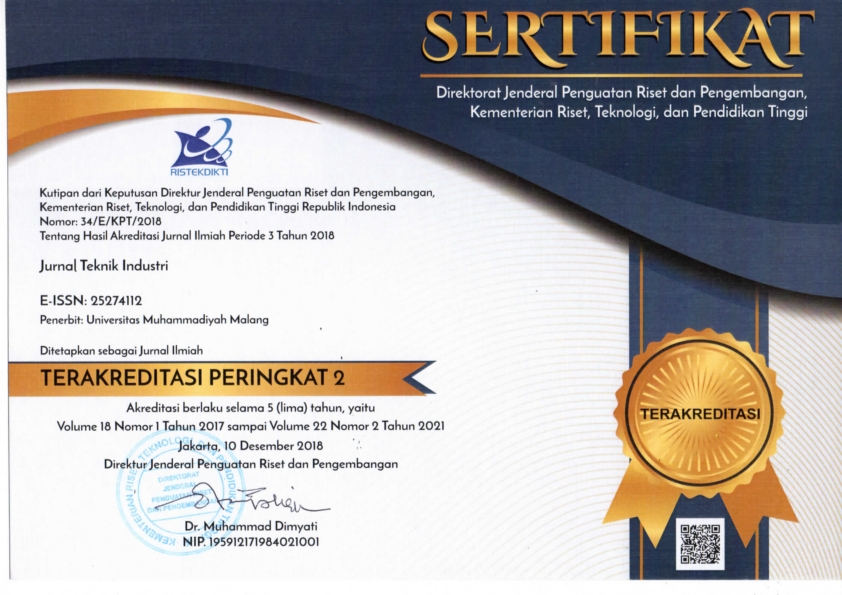The Effort to Improve The Economic Value Of Patchouli Oil: The Controlled Esterification at Production of The Aroma Compounds Base on Patchouli Oil
DOI:
https://doi.org/10.22219/JTIUMM.Vol8.No1.67-70Keywords:
patchouli oil, patchoulic alcohol, ZnCl2, flavorAbstract
Patchouli oil is an excellent of the Indonesian essential oil, because 45% of essential oil government-reserve is gained from it. Patchouli oil is commonly used in soap industrial, hair tonic, mouthwash, and high quality perfume. In the utilizing, patchouli oil is mixed with other essential oil, such as: clove oil, rose oil, and vetiver oil; since the fixative nature with flavor substance could chain the other essential oil. The fixative nature and the odor resistance come from the tertier alcohol substance, e.i.: patchoulic alcohol as its main component. Although it has long odor resistance, as an aroma substance, the odor of patchouli oil has less strong. As the base character of aroma substances determined by ester component compiler, so it is interesting to study the esterification reaction controlling the amount of ester product. In this research, patchouli oil was converted into the ester substance by esterification reaction using anhydride acid and ZnCl2 catalyst. The esterification was optimized to various concentration of ZnCl2 catalyst from 1–5% and to obtained the most preferred ester dan patchoulic alcohol ratio. Characterization of trade patchouli oil and the product of esterification were conducted based on determining the physical nature, such as: density and refraction index, and also the patchouli oil component's profile from chromatogram and mass spectrum resulted from GC and GC-MS analysis. To know most preferred ester and pachoulic alcohol ratio, using hedonic test with 25 panelists was conducted. The research resulted that the esterification reaction of patchouli oil using anhydride acid could be done by using ZnCl2 catalyst. Characterization result using GC indicated that the component's profile change under esterification condition; while characterization result using GC-MS showed the existence of patchoulic acetate substance. Variation of anhydride acid composition affected the ratio profile of patchoulic acetate and patchoulic alcohol. Hedonic test results showed that panelists'most preferred ratio of patchoulic acetate and patchoulic alcohol is 0.7934.
Downloads
References
Anonymous, 2004. Patchouli Essential Oil, http://www. craftybubbles.com/ patchouli.htm. accessed on the date of 17 April 2006.
Anonymous, 2005. Esterification, http://en.wikipedia. org/wiki/Esterification. accessed on the date of 15 April 2006.
Anonymous, 2005. Zinc Chloride, http://www.jtbaker.com/ msds/ englishhtml/ z2280.htm accessed on the date of 31 October 2006.
Kardinan, A., 2005. Crop of Producer of Esstential Oil,
First Edition. Yogyakarta: Agro of Book Media. Dichoso W.C., 2000. Plant of Species of With Essential
Oil For Perfume Production. Research Information Series on Ecosystems, 12(1): 1–16.
Sastrohamidjoyo, h., 2004. Chemistry of Essential Oil, First Edition. Yogyakarta: Gadjah Mada University press.
Trifillief, E., 1980. Isolation of the Postulted Precursor of Norpachoulenol in patchouli Leaves. Phytochemistry: 19, 2464.











